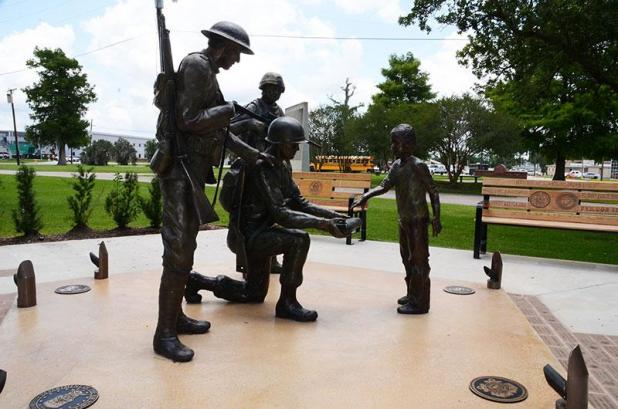
The Fallen Warriors Memorial in Morgan City includes statues depicting three soldiers: a World War I doughboy; a GI representing servicemen in World War II, Korea, and Vietnam; and a soldier who served in Iraq and Afghanistan. The middle soldier, dressed in a G.I. uniform, is kneeling while handing an American flag to a young boy. Behind the statues is a wall of honor with names of each soldier from the Tri-City area killed in combat or as a result combat wounds. (The Daily Review/Zachary Fitzgerald)
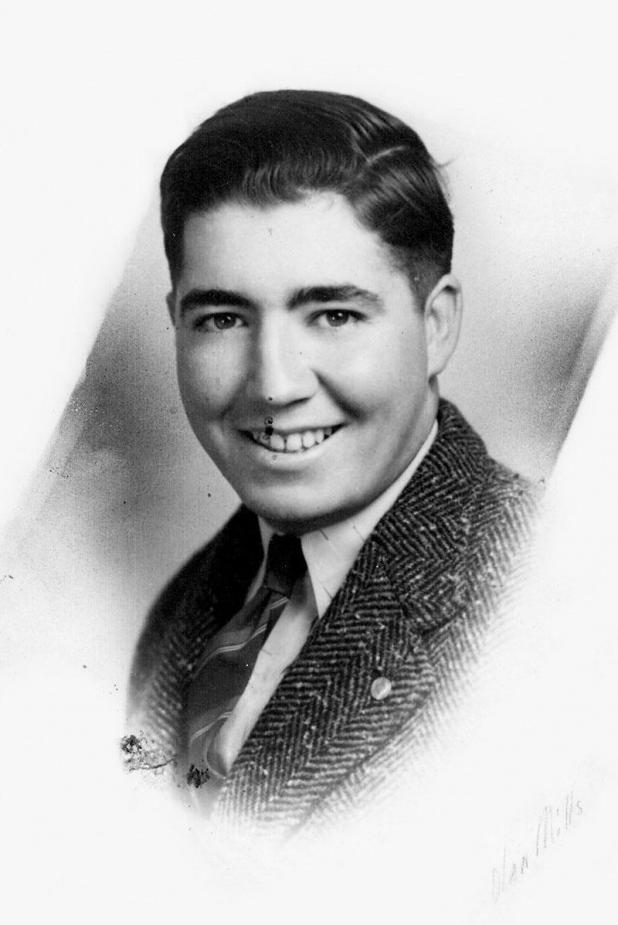
Army Pvt. August Anthony Streva
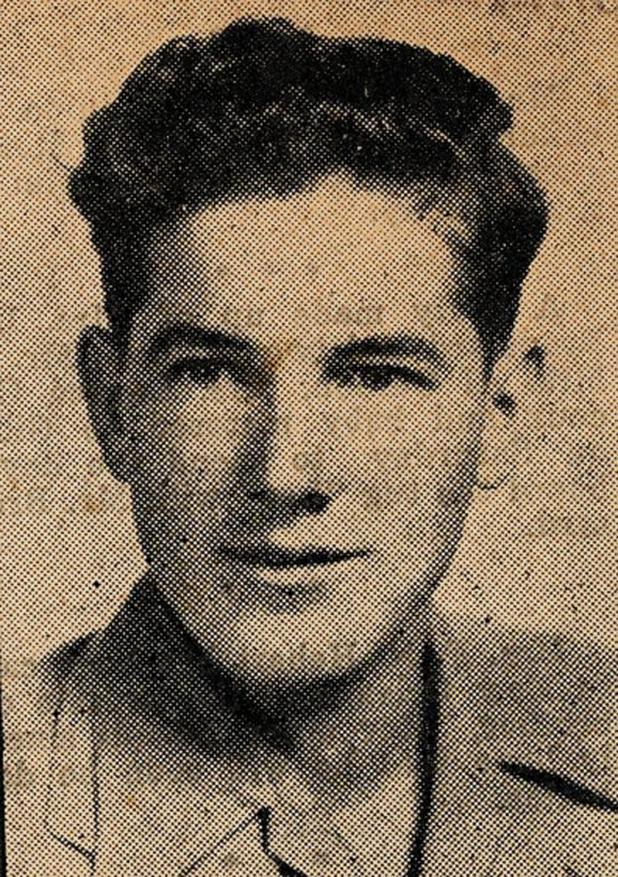
Army Pfc. Autrey Reid Freeman
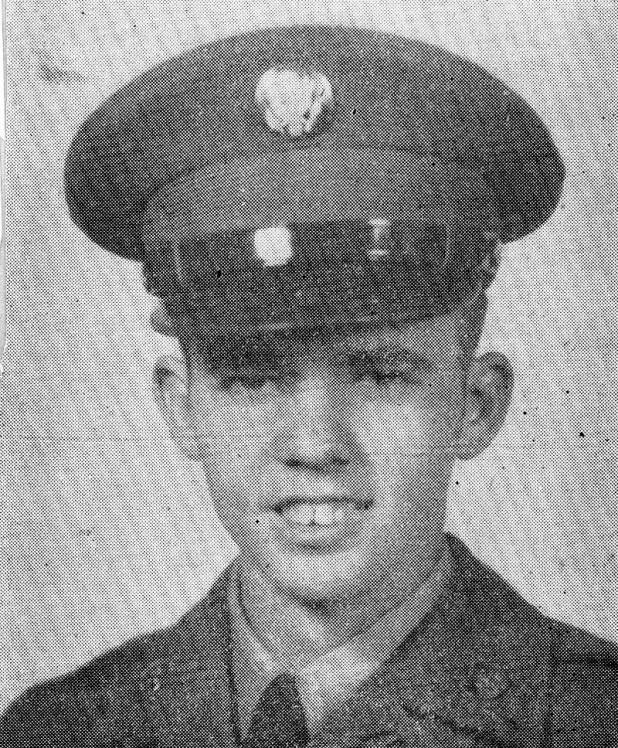
Army Pvt. James Joseph Couvillier
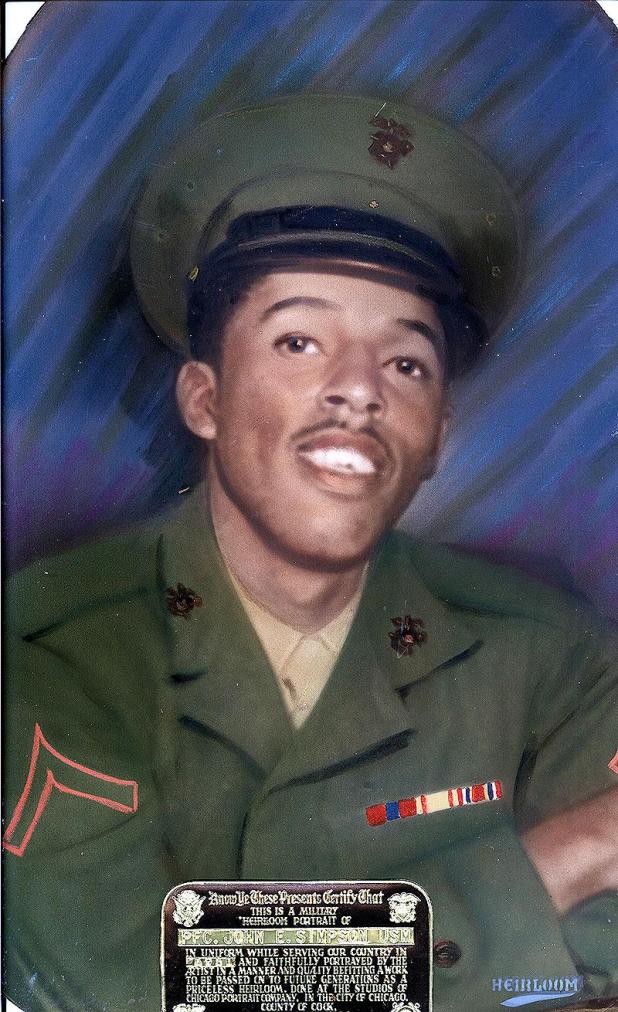
Marine Corps Pfc. John Eugene Simpson Jr.
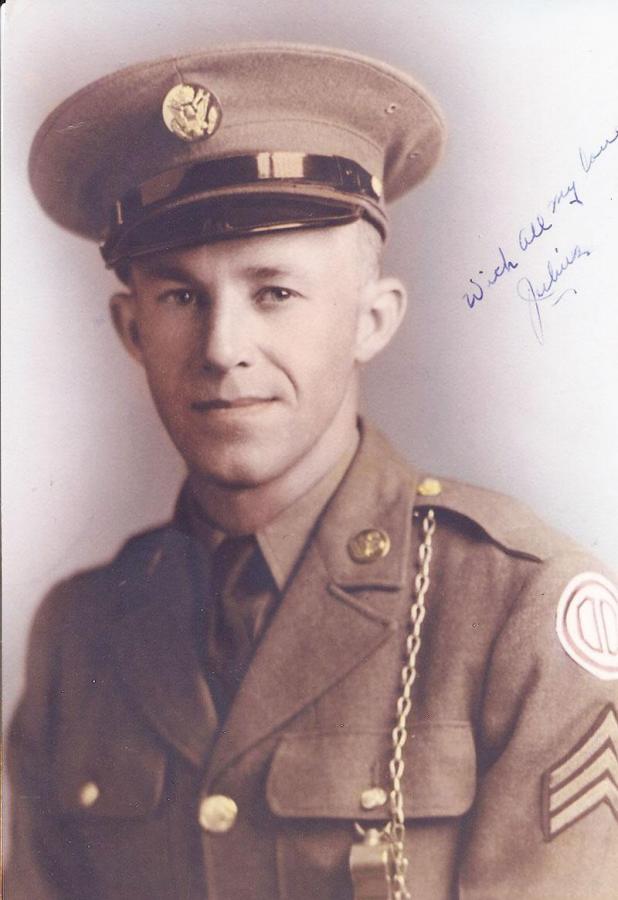
Army 2nd Lt. Julius Francis Hebert Sr.
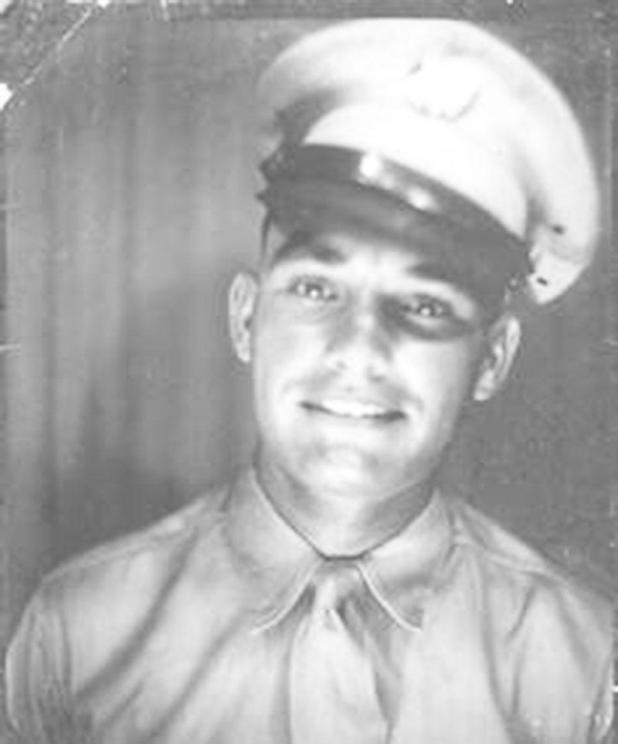
Army Pvt. Malcolm J. LaGrange
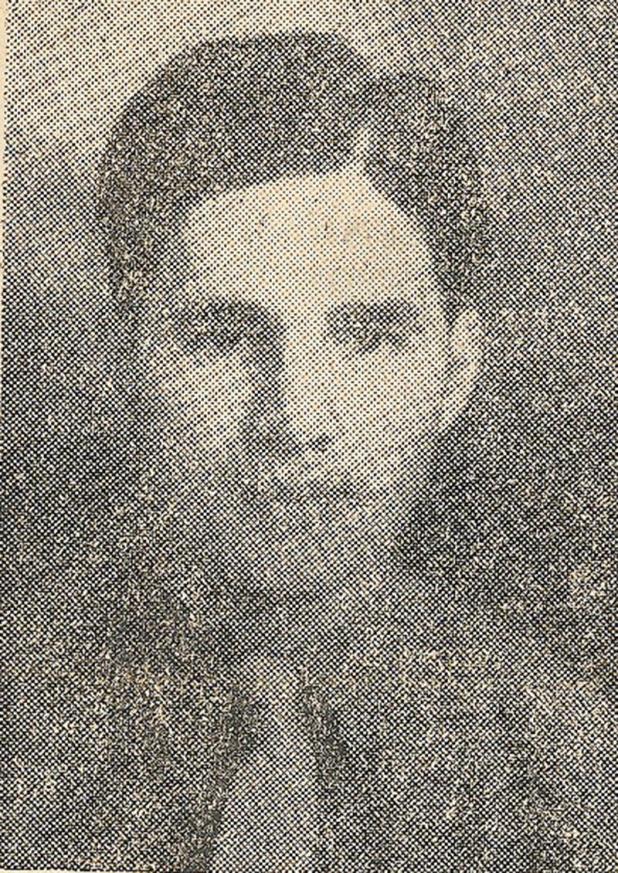
Army Pfc. William “Memot” C. Chaisson
Remembering fallen heroes
On Monday, people across the United States will reflect on the ultimate sacrifices that so many military members made for their country. Memorial Day is especially personal for several Tri-City area residents.
The names of 48 fallen soldiers are inscribed on the Tri-City Fallen Warriors Memorial Wall of Honor located next to the Morgan City Municipal Auditorium. The wall honors those soldiers from the area who were killed in wartime during combat or who died later of wounds suffered in combat.
The Daily Review contacted loved ones and those who knew a few of the soldiers whose names appear on the wall.
Army Pvt. James Joseph Couvillier, 18, of Patterson, was killed in action May 22, 1951, while fighting the enemy during the Korean War. He was a member of the 9th Infantry Regiment, 2nd Infantry Division stationed in Korea.
Couvillier’s nephew, the Rev. Ronnie Cuvillier, 63, of Patterson, said Couvillier “was very anxious to join the military.”
Couvillier tried to enter the Army before he was old enough to serve, so the Army sent him back home.
“I don’t think he was home a week until he went back and did it again. And this time he got through,” Cuvillier said.
Couvillier received the Bronze Star for his heroic actions. The day Couvillier died, his battalion was attacking a hill, according to an account of his death.
Couvillier, a radio operator, was with the lead attack. Upon reaching the crest of the hill, the assault unit was pinned down by intense enemy mortar and machine gun fire.
When his radio failed, he disregarded his personal safety and the heavy enemy fire, and moved his position several times to regain communication but was unsuccessful. Without hesitation, he moved to the highest point on the hill and regained radio contact in direct view of the enemy.
“His initiative was instrumental in completing the fire mission and turning the tide of battle,” the account stated.
Couvillier was also awarded the Combat Infantryman’s Badge, the Korean Service Medal, the United Nations Service Medal, the National Defense Service Medal, the Korean Presidential Unit Citation and the Republic of Korea War Service Medal. Couvillier is buried in the St. Joseph Catholic Cemetery in Patterson.
Cuvillier had seen his uncle’s photograph hanging in his grandmother’s hallway since he was a child, but never heard any family members talk about him.
Once Cuvillier got older, he began to ask questions about whom his uncle was and how he died. Cuvillier later received the photograph of his uncle from a cousin.
Marine Corps Pfc. John Eugene Simpson Jr., 23, of Berwick, was killed in action April 24, 1951, during the Korean War.
Simpson joined the U.S. Marine Corps and served for 19 months during World War II. After he was discharged, he attended Texas State University for Negroes. When war broke out in Korea, Simpson re-enlisted in the Marine Corps.
He shipped to Korea on Feb. 4, 1951. Simpson’s desire was to remain in the Marine Corps until retirement. He was a member of Weapons Company, 1st Battalion, 1st Marines, 1st Marine Division while serving in the Korean conflict.
He was killed while engaged with the enemy in Korea at Horseshoe Ridge. For his service in Korea, Simpson was awarded the Combat Action Ribbon, the Korean Service Medal, the United Nations Service Medal, the National Defense Service Medal, the Presidential Unit Citation and the Republic of Korea War Service Medal.
Simpson is buried in the Berwick Cemetery.
His daughter, Jacqueline Simpson Singleton, 68, of Morgan City, was 2 years old when her father was killed.
Memorial Day holds a special place in Singleton’s heart because of Simpson’s death serving his country.
“I go over all his things every Memorial Day and Veterans Day,” Singleton said.
Army Pvt. August Anthony Streva , 20, of Morgan City, was severely wounded on Omaha Beach, Normandy, France, on D-Day, June 6, 1944. Streva graduated from Sacred Heart High School in 1943.
Streva, a member of Company G, 2nd Battalion, 29th Infantry Regiment, 175th Infantry Division, died of his wounds June 13, 1944, at St. Lo, Normandy, France .
“In those days, an officer would come by the house to tell you if you have a loved one that got killed,” Streva’s nephew, Jerry Streva, 76, of Lafayette, said.
Anthony Streva was his father’s “baby brother.”
“My grandmother used to look out the window every day, and she saw officers come in different parts of the neighborhood. And each time, she would say a prayer because they didn’t come to her house,” Jerry Streva said.
One day, officers showed up at her house.
“We take a lot of pride in the fact that Uncle Anthony fought for our country,” he said. “It’s a good feeling that you had somebody in your family that’s a hero.”
Anthony Streva is buried at the Normandy American Cemetery at Colleville-sur-Mer, France.
Army 2nd Lt. Julius Francis Hebert Sr., 32, of Morgan City, was killed in action Feb. 1, 1945, in Germany during World War II.
His son, Julius Hebert Jr., 72, of Morgan City, was 5 months old when his father died and never met him.
His mother kept the dozens of letters that her husband wrote to her during the war.
“I would love to someday be able to sit down and read and decipher (those letters),” Hebert said.
Julius Hebert Jr. still has a small military olive-colored rosary that his father had during the war.
“He had grown up in the Catholic faith, and I guess that was one of the things that kept him going,” Julius Hebert Jr. said.
Julius Hebert Sr. grew up in Terrebonne Parish and was buried in the Houma cemetery. Years later, his remains were relocated to the Morgan City Cemetery, which was an emotional time for the family, his son said.
Prior to his Nov. 25, 1940, enlistment in the Army, Hebert had completed high school and was working in a local department store as a department manager.
Part of the after action report said, “Lt. Hebert was commanding a Rifle Platoon of Co. B. He was killed after leading his men in an attack on a town in Germany. They encountered strong resistance but succeeded in securing their objective.”
Army Pfc. Peter Anthony Manfre, 20, of Morgan City, was killed in action Jan. 11, 1945, on the Island of Luzon in the Philippine Islands. Manfre was a 1941 graduate of Morgan City High School and is buried in the Morgan City Cemetery.
Joe Governale, 93, of Patterson, was stationed with Manfre during World War II. Manfre was killed the third day after his unit arrived on Luzon. They were in the 169th Infantry Regiment, 43rd Infantry Division.
“Pete and I were very good friends,” Governale said.
The unit left New Guinea the day after Christmas, and Manfre told Governale that he “was going to make a sick call.” So Governale didn’t know Manfre was involved in the invasion as the two men weren’t in the same company.
Late one evening, Governale’s brother told him that Manfre had been killed by an artillery shell. Governale had known Manfre’s family before joining the service.
Manfre’s mother wrote to Governale after Manfre’s death to learn what happened to him.
Army Pfc. Autrey Reid Freeman, 21, of Morgan City, was killed during the same operation Jan. 14, 1945. Governale met Freeman at basic training.
Freeman was working for the Chicago Bridge and Iron Works in Morgan City at the time of his enlistment. At the time of his death, Freeman was also part of the 169th Infantry Regiment, 43rd Infantry Division. Freeman’s remains were later returned to the United States, and he is buried in the Morgan City Cemetery.
Army Pfc. William “Memot” C. Chaisson, 21, was killed in action Nov. 29, 1944, at Aitope , New Guinea. Governale was in the same regiment and division with Chaisson, who was “killed by friendly fire.”
Chaisson was originally interred at the US Armed Forces Cemetery in New Guinea.
His brother, Marine Corps Pvt. Roy Peter Chaisson, would be killed in action a few months later at Iwo Jima. William Chaisson’s remains were re-interred at Fort William McKinley, Manila, the Philippines.
According to William Chaisson’s commander, “William was killed as a result of a shrapnel wound, received when a mortar shell exploded prematurely. It was an unavoidable and unexpected accident.”
Army Pvt. Malcolm J. LaGrange, 20, of Patterson, was killed in action Sept. 20, 1944, in Luxembourg. At the time of death, LaGrange was assigned to the 10th Infantry Regiment, 5th Infantry Division.
LaGrange was a “very good friend” of Governale’s, and they graduated high school together, Governale said.
All the fallen soldiers listed were awarded the Purple Heart Medal.
Fallen Warriors Memorial Co-Chairman Terry Mayon provided information on the Tri-City fallen soldiers.
